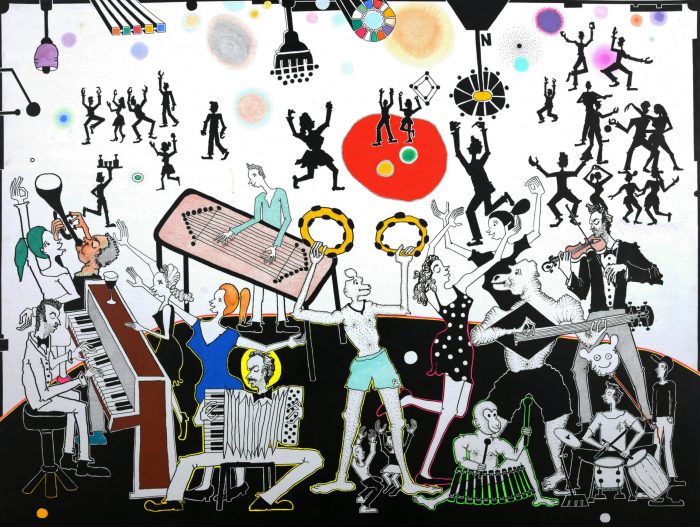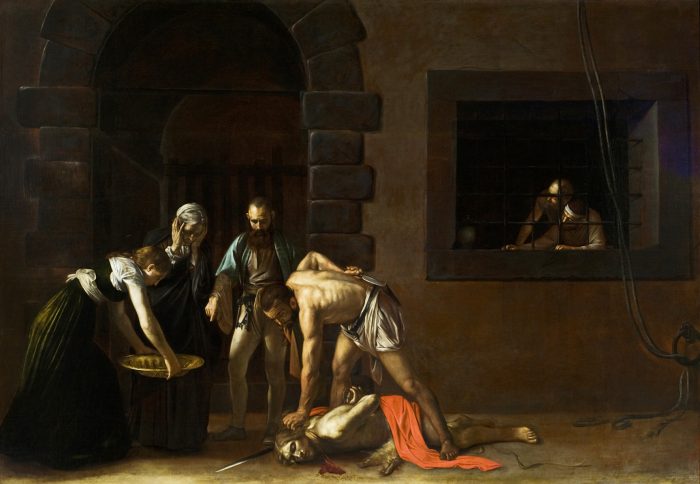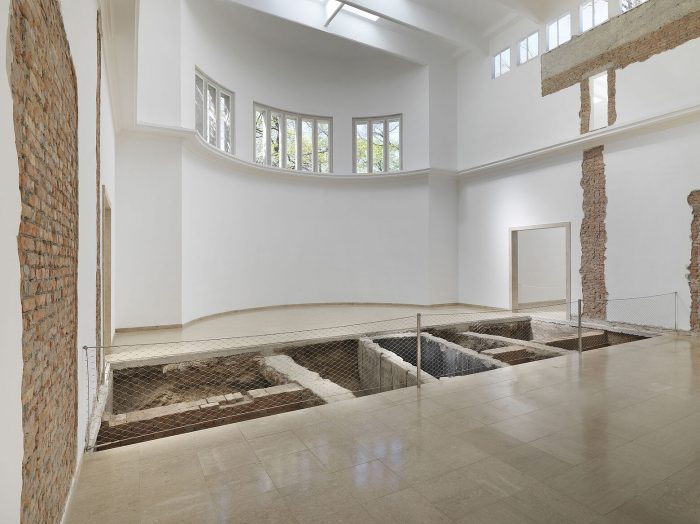
- Permbajtja
- prev
- next
- prev
- next
“The Milk of dreams ”
The 59th edition of the Venice Biennale
The Milk of Dreams takes its title from a book by Leonora Carrington (1917–2011) in which the Surrealist artist describes a magical world where life is constantly re-envisioned through the prism of the imagination. It is a world where everyone can change, be transformed, become something or someone else.
The Exhibition The Milk of Dreams takes Leonora Carrington’s otherworldly creatures, along with other figures of transformation, as companions on an imaginary journey through the metamorphoses of bodies and definitions of the human.
The 59th Venice Biennale finally comes after three years full of novelties such as having the first woman Curator, Cecilia Alemani, also bringing on board a prominent presence of women transgender and non-binary gender artist.
Her deep research has produced an unusually coherent show, which, aside from the acreage of new art, also deepens its frame of reference by showing historic work, often by surrealists such as Ithell Colquhoun, Dorothea Tanning and Remedios Varo. Such artists prefigure Ms Alemani’s contemporary preoccupations: the body in transformation, metamorphosis, the world considered from a perspective other than that of the white male.
This Exhibition is grounded in many conversations with artists held in the last few years. The questions that kept emerging from these dialogues seem to capture this moment in history when the very survival of the species is threatened, but also to sum up many other inquiries that pervade the sciences, arts, and myths of our time.

Milk of dreams Brick House (2019) by Simone Leigh, part of The Milk of Dreams at Venice Biennale. Photograph- David Levene
How is the definition of the human changing? What constitutes life, and what differentiates plant and animal, human and non-human? What are our responsibilities towards the planet, other people, and other life forms? And what would life look like without us?
These are some of the guiding questions for this edition of the Biennale Arte, which focuses on three thematic areas in particular: the representation of bodies and their metamorphoses; the relationship between individuals and technologies; the connection between bodies and the Earth.
As visitors move through the Exhibition in the Central Pavilion and the Corderie, they encounter five smaller, historical sections: miniature constellations of artworks, found objects, and documents, clustered together to explore certain key themes. Conceived like time capsules, these shows within the show provide additional tools of investigation and introspection, weaving a web of references and echoes that link artworks of the past – including major museum loans and unconventional selections – to the pieces by contemporary artists in the surrounding space.
This wide-ranging, transhistorical approach traces kinships and affinities between artistic methods and practices, even across generations, to create new layers of meaning and bridge present and past. What emerges is a historical narrative that is not built around systems of direct inheritance or conflict, but around forms of symbiosis, solidarity, and sisterhood.
We have brought together a small presentation of Albania, Kosovo, Northern Macedonia's pavilions and of those who have attracted attentions of the visitor, thanks to architect Blerta Vula Riznavolli, who introduced us her impressions of this Venice Biennale edition
ALBANIAN PAVILION :
“From scratch”
Artist: Lumturi Blloshmi
Curator: Adela Demetja
Lumturi Blloshmi (1944–2020), is the first female artist to represent Albania with a solo presentation in Venice and Adela Demetja the first Albanian female curator of the Albanian Pavilion.
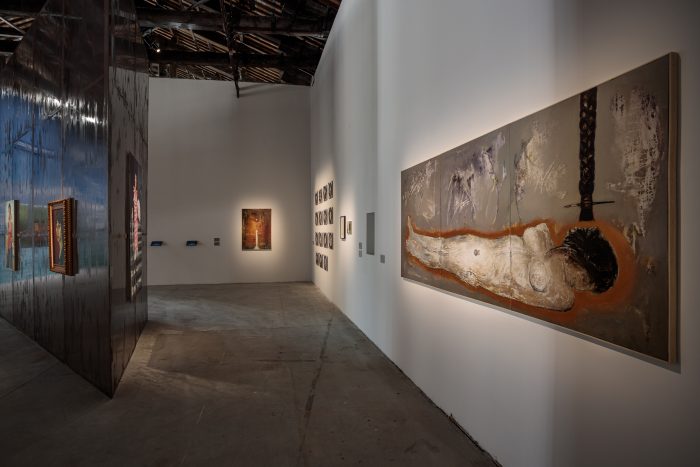
Installation view from Albania Pavilion, photographer Riccardo Tosetto
Like almost all the artists of her generation, Lumturi Blloshmi painted in socialist realism style until the end of the ‘80s. After the ‘90s, she was nevertheless one of the few artists of her generation that managed to constantly reposition and transform herself and her work successfully until the end of her life.
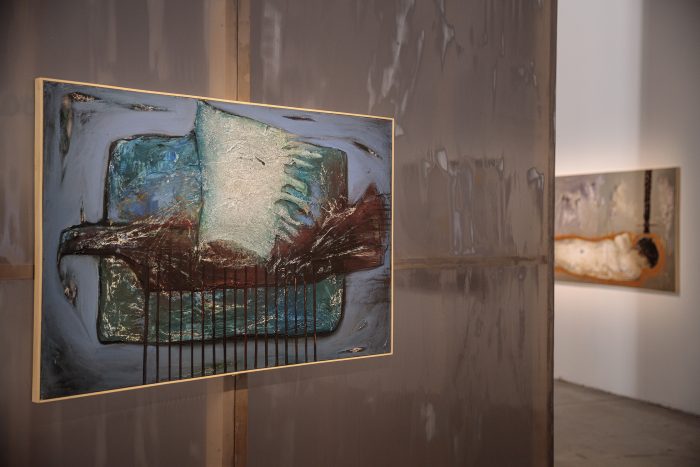
Installation view from Albania Pavilion, photographer Riccardo Tosetto
Blloshmi stood in the middle of her cosmos, not as a passive viewer but rather as an active participant. This allowed her to openly express her perceptions about the art world and its mechanisms and the society which she was part of. Her view was that of a strong woman criticizing and provoking with humor the power establishment dominated by
men. What makes her oeuvre remarkable is the symbolic simplicity and optimism she uses when dealing with the harsh reality.
Oftentimes Blloshmi depicted herself in her paintings, performances and photographs. By doing so, she clearly created, through subjectivity, a relationship between herself and the given social-political context, which allowed her and us to perceive history and reality from a self-defined and personal point of view.
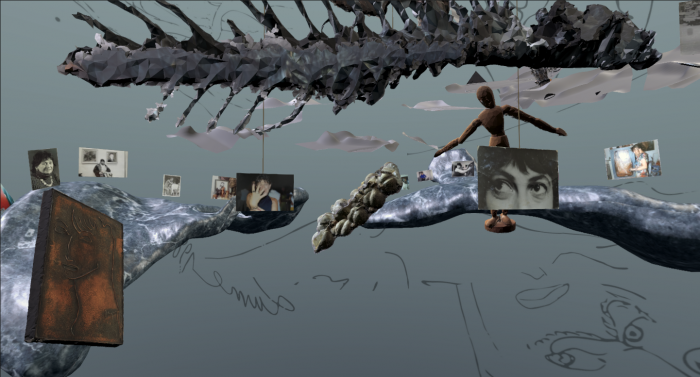
The presentation under the title “Lumturi Blloshmi. From scratch” will be conceived as an exhibition project aiming at researching, examining, presenting and positioning the work and life of Lumturi Blloshmi anew within the national and international art history. The presentation is conceived in three parts. The heart of the presentation consists of a selection of Blloshmi’s works from the 1960s until the 2010s, spanning self-portraits and compositions in painting and photography that say as much about Blloshmi’s aesthetic essence and personal reality as they do about the specific political and social context in which they were created. By remaining true to the unfiltered urge to express experience awareness, Blloshmi constantly pushed the boundaries of media and formal styles by experimenting with materials and combinations of media to achieve what she called “a distinct tangible universe.”
Formally situated within the boundaries of figuration, her oeuvre - strongly informed by imagination and innovation - at its core transmits and resonates a sense of universality and timelessness. The pavilion is conceived in such a way as to reflect Blloshmi’s tangible yet simultaneously ungraspable universe and its openness to interpretations. The exhibition architecture and display is closely created in collaboration between the curator and the German
architect Johanna Meyer-Grohbrügge.
KOSOVO PAVILION
THE MONUMENTALITY OF THE EVERYDAY
Artist: Jakup Ferri
Curator: Inke Arns
Jakup Ferri presents paintings, embroideries and carpets at the Biennale Arte 2022 – in an exhibition entitled The Monumentality of the Everyday. Ferri’s drawings are mostly depicting everyday scenes involving animals, children, acrobats, musicians, and sports activities (like swimming, snorkeling, bicycling). And then there is this aspect of the vernacular turning into the surreal, or magic, like animals speaking or making music, people turning into birds, people making music for animals or even becoming animals or hybrid creatures. Very often, there’s poetic interactions between people, animals, and objects, looking at each other, thus creating lines of sight – like silent dialogues.
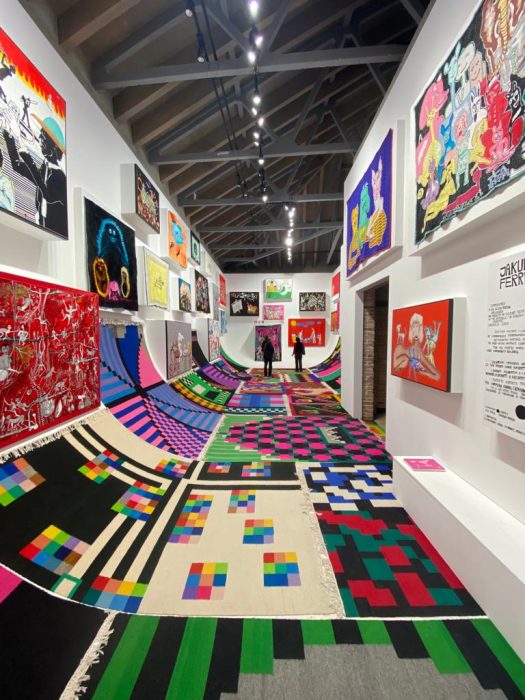
photo by. Blerta Vula
While Ferri’s work is insipred by children’s books, folk art, and so-called outsider art. We see intimate scenes from everyday life, with happy protagonists, mostly in bright colors. Recently, Ferri also became interested in topics such as mobility and utopian architecture from the 1960s, such as Archigram’s Walking City.
NORTH MACEDONIA PAVILION
Landscape Experience
Artist: Robert Jankuloski and Monika Moteska
Curator: Ana Frangovska, Sanja Kojic Mladenov,
“Man is the only being who consciously refers to its existence,” and in the context of the philosophy of existence if we continue with Sartre’s thinking about human freedom in terms of personal choice, choosing opportunities and taking responsibility for events and the risk to human existence, the conclusion or contradiction of the meaninglessness or absurdity of human existence is drawn, which is often confirmed in many examples throughout the history of mankind.
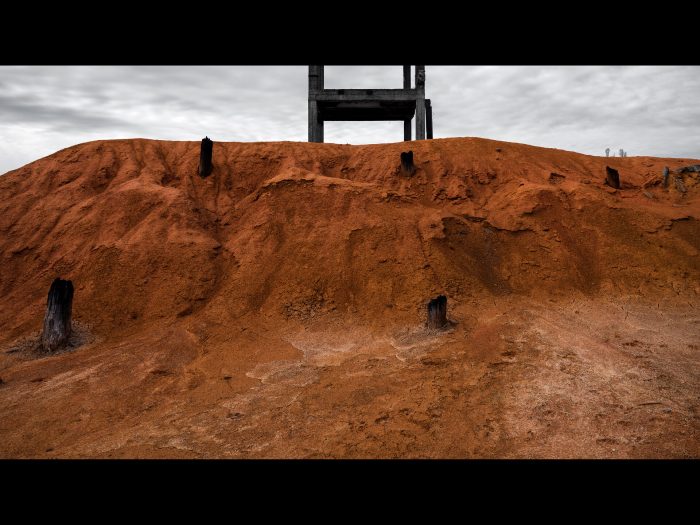
Photo Robert Jankuloski.
The project Landscape Experience by Robert Jankuloski and Monika Moteska reflects on this topic as well as many other sub-layers. It is a multimedia project that includes video installations, objects and photos. The “aesthetics” of the abandoned (neglected) landscapes, placed in a new context, with new layers of transcription of the dispositions life-death, beautiful-ugly, healthy-poisonous are present in the previous research of the artists, and in the project Landscape Experience they venture even deeper. In addition to the “transformed landscape panopticons,” the project questions the body—man as a symbol of power, but also as a fragile and easily vincible force, as well as the dominance of capital, colonial policies, ideologies and technology that influence the distortion of balance of human life, wildlife and natural environment within the ecosystem.
MALTA PAVILION
Diplomazija Astuta
Artist: Arcangelo Sassolino, Giuseppe Schembri Bonaci, Brian Schembri
Curator: Keith Sciberras, Jeffrey Uslip
Comisioner: Arts Council Malta
Diplomazija Astuta reimagines Caravaggio’s seminal Maltese altarpiece The Beheading of Saint John the Baptist as a kinetic, sculptural installation. Through induction technology, molten steel droplets fall from the sky into seven rectangular basins of water, each representing a subject in The Beheading.
The Malta Pavilion, titled Diplomazija astuta, reimagines Caravaggio’s seminal altarpiece The Beheading of St. John the Baptist as an immersive, sculptural installation that overlays biblical narrative onto the present traversing 1608 to 2022, from the noetic to the metaphysical.
Saint John’s execution by Caravaggio.
Diplomazija Astuta – including artists Arcangelo Sassolino, Giuseppe Schembri Bonaci, and Brian Schembri – reimagines Caravaggio’s seminal Maltese altarpiece The Beheading of Saint John the Baptist as a kinetic, sculptural installation. Through induction technology, molten steel droplets fall from the sky into seven rectangular basins of water, each representing a subject in The Beheading. By transposing the Oratory of the Decollato’s Zeitgeist onto the Malta Pavilion
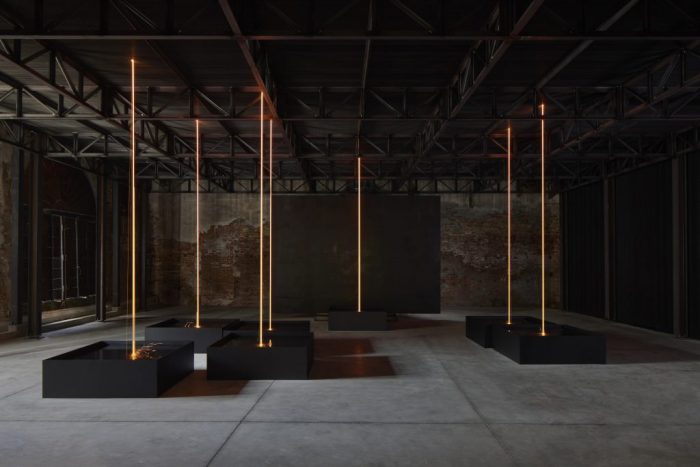
Photo Agostino Osio, Alto Piano
Diplomazija Astuta resituates Caravaggio’s immanent themes within modern life, prompting viewers to negotiate an immersive space where the tragedy and brutality of Saint John’s execution is experienced in the present day, injustices of the past are reconciled, and shared humanist principles are upheld in the future.
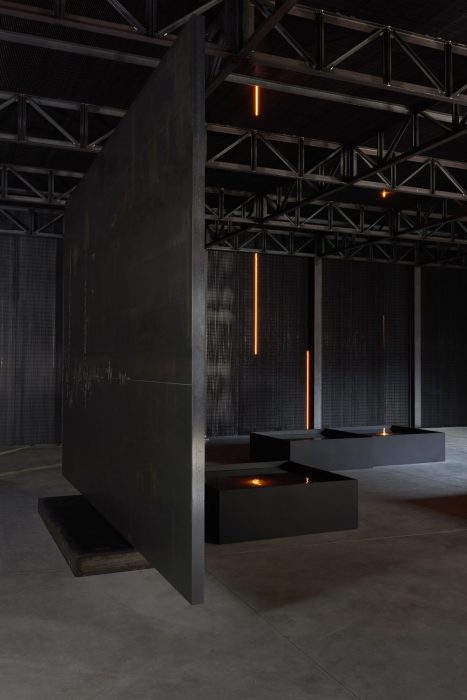
Photo Agostino Osio, Alto Piano
ICELAND PAVILION
Perpetual Motion
Artist: Sigurður Guðjónsson
Curator: Mónica Bello,
For the Pavilion of Iceland’s exhibition at the 59th International Venice Biennale, Reykjavík-based contemporary artist Sigurður Guðjónsson will present the multisensory sculpture Perpetual Motion. The artwork will offer a poetic exploration of materiality at the edge of the boundaries of perception, powerfully combining moving images and sound to activate the space and create an entrancing, meditative experience for visitors.
Photo by Ugo Carmeni
" The artwork is intended as a play on the boundaries between reality and fiction, depicting something that is real but usually beyond our field of perception. My aim is to create a poetic, multisensory experience of materiality that encompasses scale, light, dimension and motion, using sound and video to transform the space in a sculptural way.”- Sigurður Guðjónsson
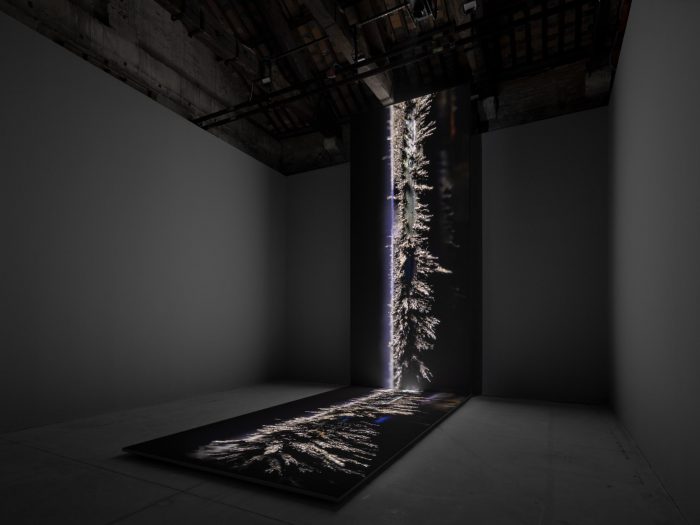
Photo nga Ugo Carmeni
Known for his time-based media works that pit manmade machinery against technical relics, Guðjónsson invites viewers to reconsider the abstract with a perception-bending video piece, which zooms in on the formations metal dust makes when attracted to a magnetic rod. This microscopic view into materiality not only results in submersive imagery, but creates a trance-like and meditative atmosphere with its use of moving images and a droning soundtrack
ITALIAN PAVILION
History of the Night and the Fate of Comets
Artist: Gian Maria Tosatti
Curator: Eugenio Viola
Cominisioner: Onofrio Cutaia,
The Italian Pavilion presents the work of a single artist. The privilege goes to Gian Maria Tosatti, whose vast environmental site-specific installation occupies the entire Tese delle Vergini space. This powerful and unsettling work, titled History of Night and Destiny of Comets, is a tale of dualities: between man and nature; sustainable development and territory; ethics and profit.
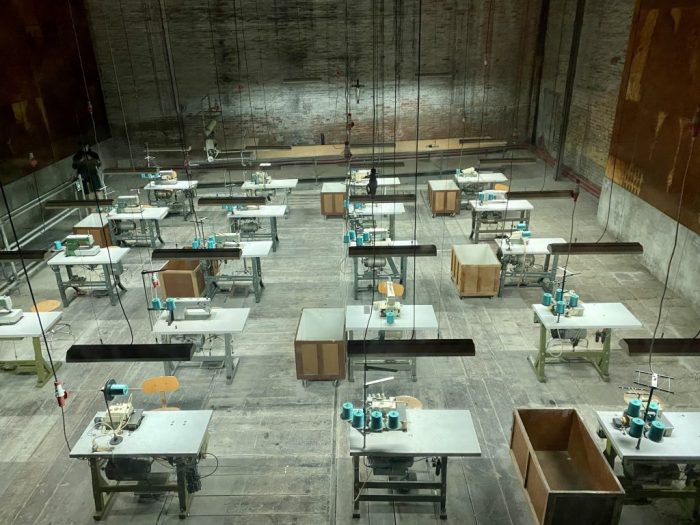
Photo by Sarah Cascone
Italy, with its historical background as a nation recovering from two world wars and affected by an extraordinary economic growth, the so-called “Italian miracle,” provides the scenario of the History of Night. A series of industrial spaces, originally used for different productions, silently guard obsolete and disused machines, abandoned and lonely objects in which there is no trace of the human presence that once made them useful and functional.
The exhibition is envisioned according to a theatrical ratio that articulates the narrative into a prologue and two acts: History of Night and Destiny of Comets. It is a vast environmental site-specific installation that deals with the difficult balance between man and nature, sustainable development and territory. It proposes a vision of the current state of humanity and its future prospects and is conceived as an intermediary device that mixes various languages.
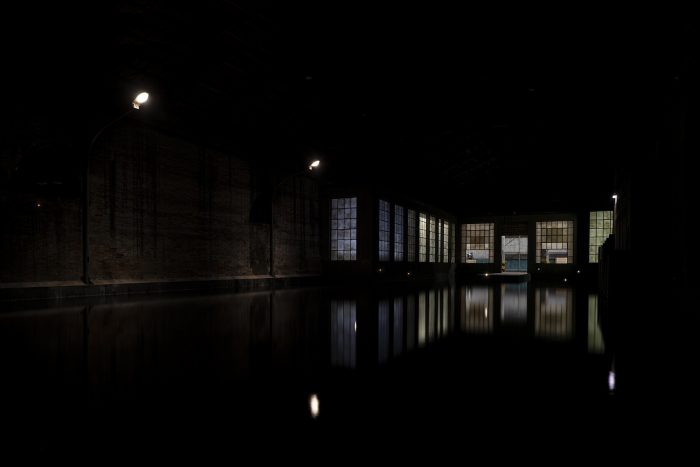
Photo from DGCC-MiC
The Destiny of Comets is the final vision, which reminds us that indignant nature has not forgiven man since the time of the Flood. It opens to a nocturnal sea beating against its walls. A row of half-sunken street lamps indicates that there must have been a street in front of us. On the threatening surface of this dark sea unexpectedly rises an inversely disturbing element, the sign of a possible peace: a swarm of hundreds of fireflies flying over a world where nature has regained its dominion and restored its cruel law of supreme beauty and harmony. It is a vertigo that transforms desolation into painful compassion and hope.
TURKISH PAVILION
Once upon a time
Artist: Füsun Onur
Curator: Bige Örer
Cominisioner: Istanbul Foundation for Culture and Arts (İKSV)
Füsun Onur has pushed the boundaries of painting and sculpture for more than half a century, giving form to her art through instinct and intuition and creating a language beyond time. Uninterested in dominant art-world trends, Onur has continued to produce delicate and discreet works for decades, made from simple, everyday materials charged with autobiographical references.

Onur tells an evocative story using a minimalist approach and silent intimations of music, turning a critical eye on the contemporary condition and inevitably the pandemic, both of which pose threats to the future of the world. Onur depicts a struggle waged by cats and mice, united against the governing logics of anthropocentrism, which harms nature and the planet by arrogantly ruling over them.
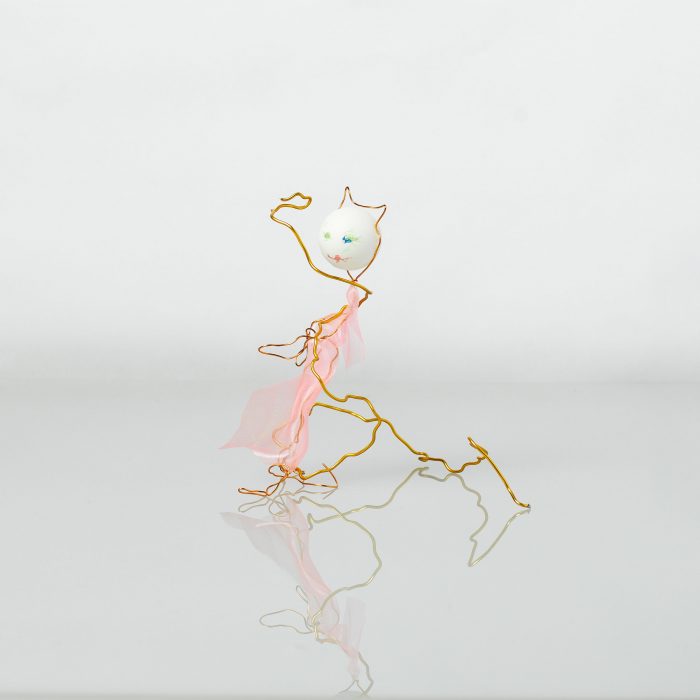
Photo by Hadiye Cangokce
Onur tells an evocative story using a minimalist approach and silent intimations of music, turning a critical eye on the contemporary condition and inevitably the pandemic, both of which pose threats to the future of the world.
BELGIUM PAVILION
THE NATURE OF THE GAME
Artist: Francis Alÿs
Curator: Hilde Teerlinck
It’s hard not to be moved by the Belgian artist’s installation of more than half a dozen films capturing children at play. Shot over the course of more than 20 years in Afghanistan, Belgium, Canada, DR Congo, Hong Kong, Mexico, and Switzerland, the films show children engaged in various games, united by a common focus. There’s a determined boy rolling a tire up a hill only to climb inside it to roll down; a little girl meticulously skipping over sidewalk cracks; a group of children competitively racing snails. It’s an installation that needles you to think about the Big Problems in the world—climate change, war, inequality—without mentioning them at all.
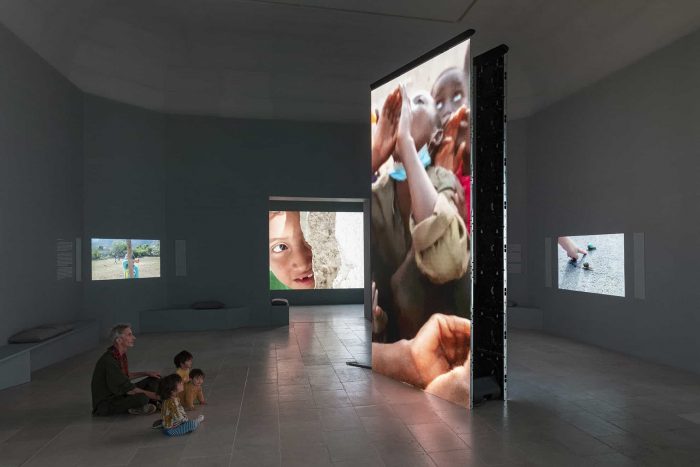
Photo nga Roberto-Ruiz
KOREAN PAVILION
GYRE
Artist: Yunchul Kim
Curator : Youngchul Lee
The exhibition curated by Young-chul Lee is inspired by a 1919 poem by William Butler Yeats called ‘The Second Coming’, in which the Irish poet describes how a ‘widening gyre’ would unleash anarchy unto the world.
For the Biennale, Kim turns the pavilion into its own world, or ‘living body’, occupied by his dynamic works that intend to awaken visitors’ senses to the continuous cycle of beginnings and endings. The spectacular installations reflect the artist’s transdisciplinary practice fusing art, literature, mythology, philosophy and science
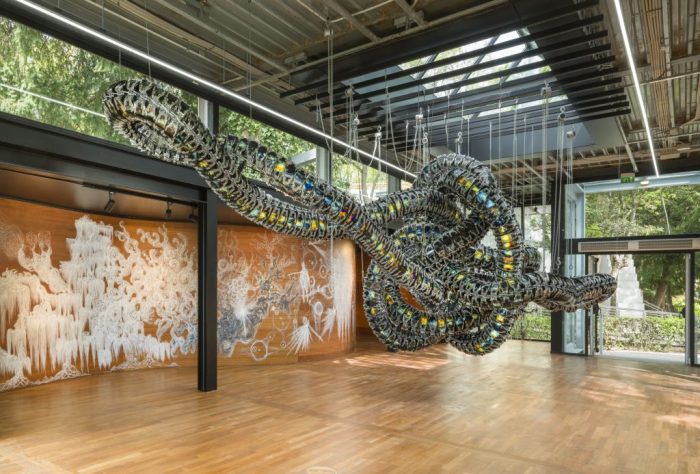 Chroma-V.Korean Pavilion photo by Roman März
Chroma-V.Korean Pavilion photo by Roman März
At the center of the exhibition is the 50-meter-long Chroma V (2022). Tangled in one big knot, the snake-like sculpture links all the artworks and the surrounding spaces together, like the central nerves that connect different parts of the body. As it receives signals from another exhibit, Argos – The Swollen Suns, the sculpture begins to pulsate and breathe.
x
Behind Chroma V is Kim’s site-specific drawing Gyre (2022), which illustrates the ‘world as a labyrinth’ where matter, time, objects and beings interact and co-exist.
His presentation, “Gyre,” consists of five tactile and entanglened breathing bodies, not that there is anything human about them. The material execution of these five large kinetic sculptures is truly exquisite, and each of the machines constantly pulses and flows as they communicate with another and emanate insect sounds. The work creates a portal for contemplation on the universe and existence.
For the Biennale, Kim turns the pavilion into its own world, or ‘living body’, occupied by his dynamic works that intend to awaken visitors’ senses to the continuous cycle of beginnings and endings. The spectacular installations reflect the artist’s transdisciplinary practice fusing art, literature, mythology, philosophy and science.
GERMAN PAVILION
Relocating a Structure
Artist: Maria Eichhorn
Curator: Yilmaz Dziewior
Relocating a Structure consists of a number of interacting components. Eichhorn’s initial idea was to relocate the German Pavilion for the duration of the Biennale and then to faithfully reassemble it on its original site. The temporary relocation of the building would leave an empty space, increasing the undeveloped area of the Giardini, originally designed as a public park, as well as the visual and spatial environment around the adjacent pavilions.
The German Pavilion’s absence would open up space for movement, reflection, and an examination of the conditions to which art is exposed in the context of the Biennale with its national pavilions.
“The German Pavilion represents a challenge for artists on several completely different levels. With every attempt at deconstruction, one is confronted with it yet again. I regard the German Pavilion not as isolated, but as part of an ensemble and engaged in interplay with other pavilions and other country participations in terms of national-territorial and geopolitical, global-economic, and ecological developments.” Maria Eichhor
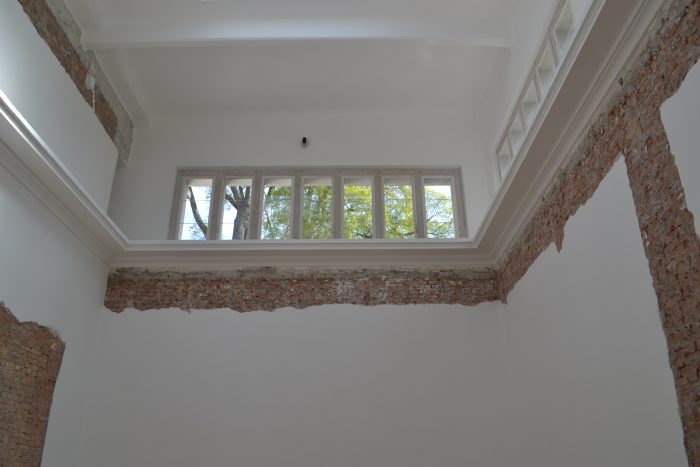
This was a small summary of the most important art event and we hope you have received some valuable information but anyway we hope you have the opportunity to visit this edition, you have time until November!
Sources : E-flux.com, Arnet.com, Design Boom,wallpaper.com,Kosovopavilion,
